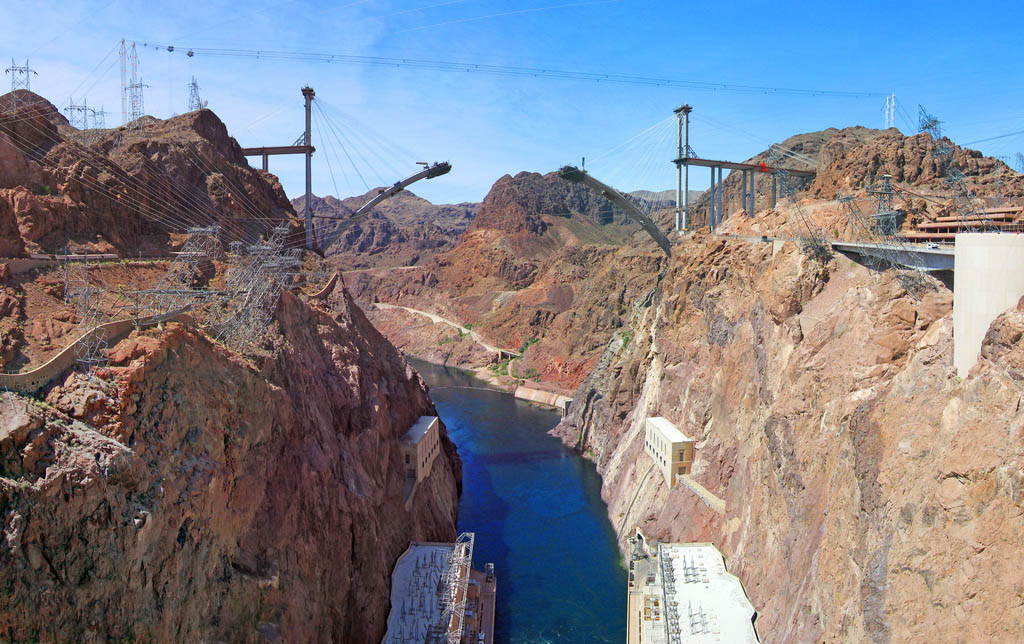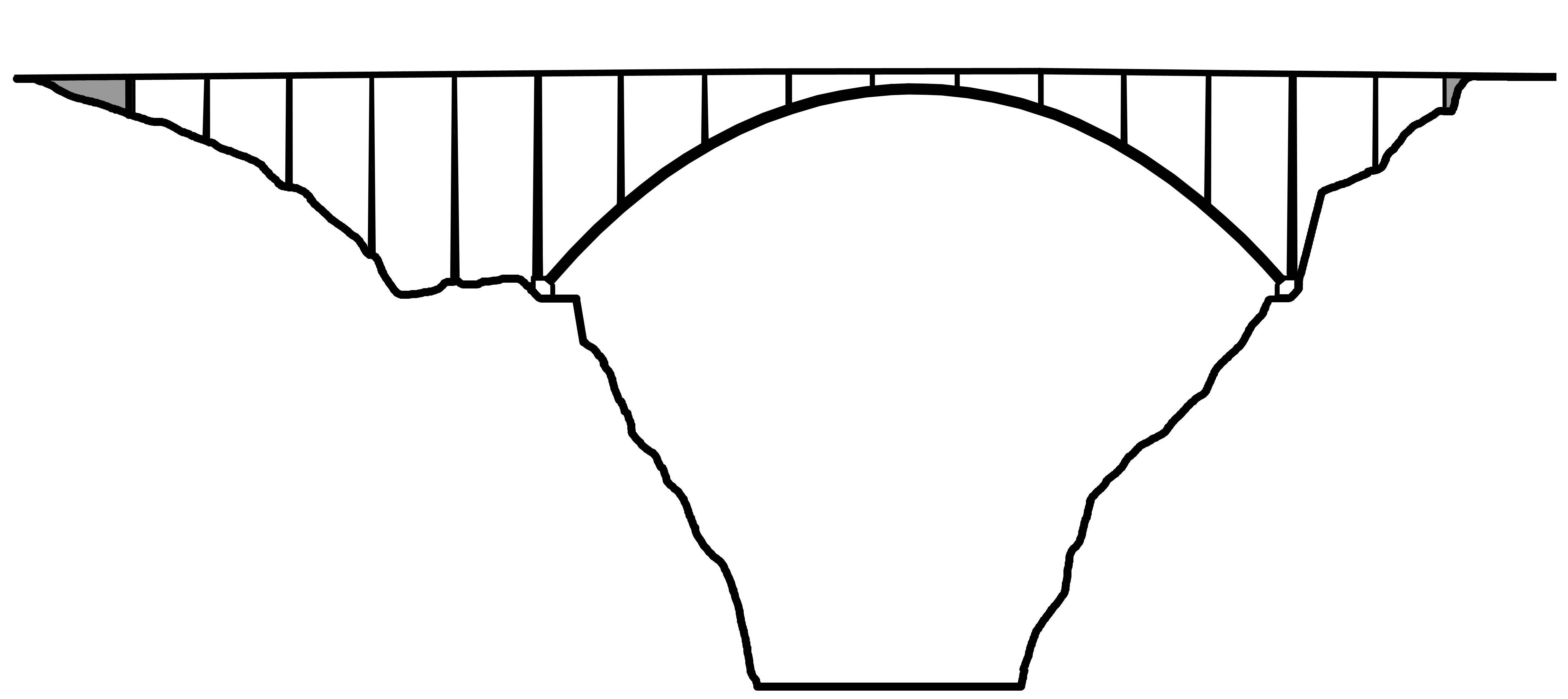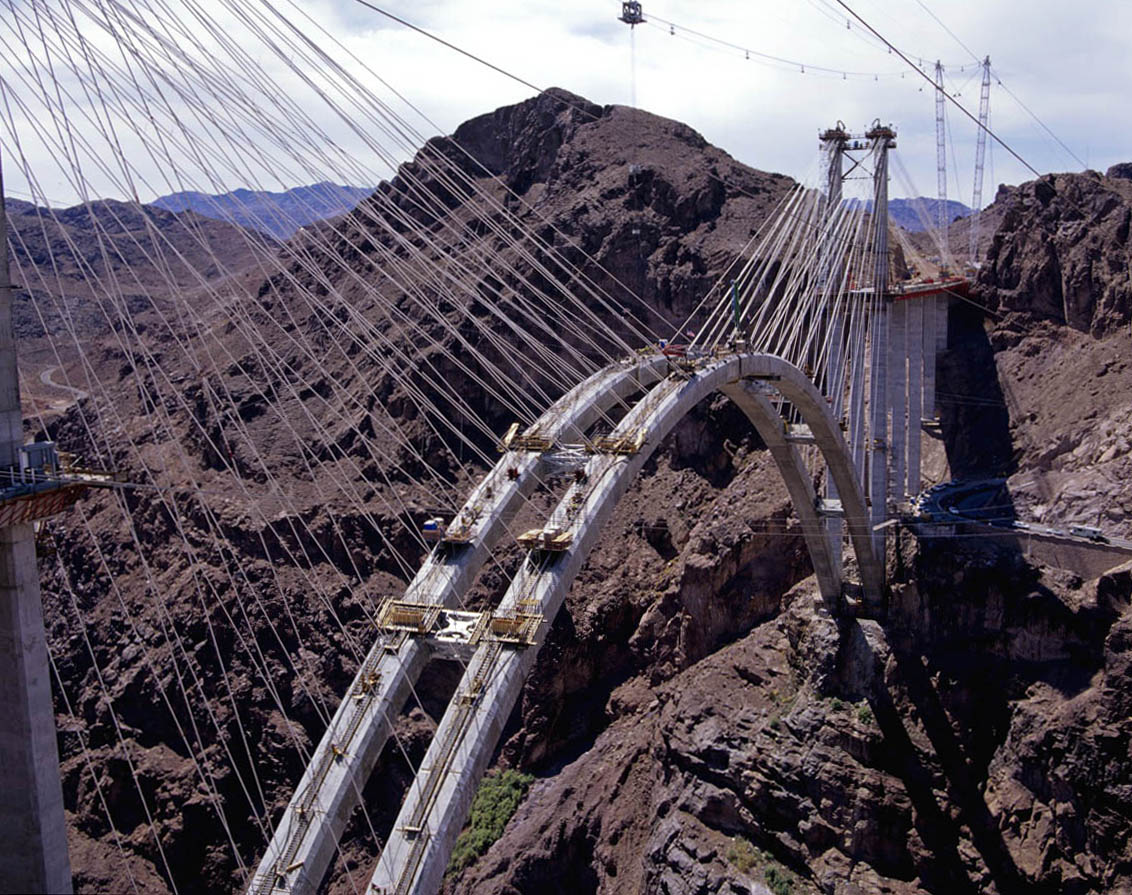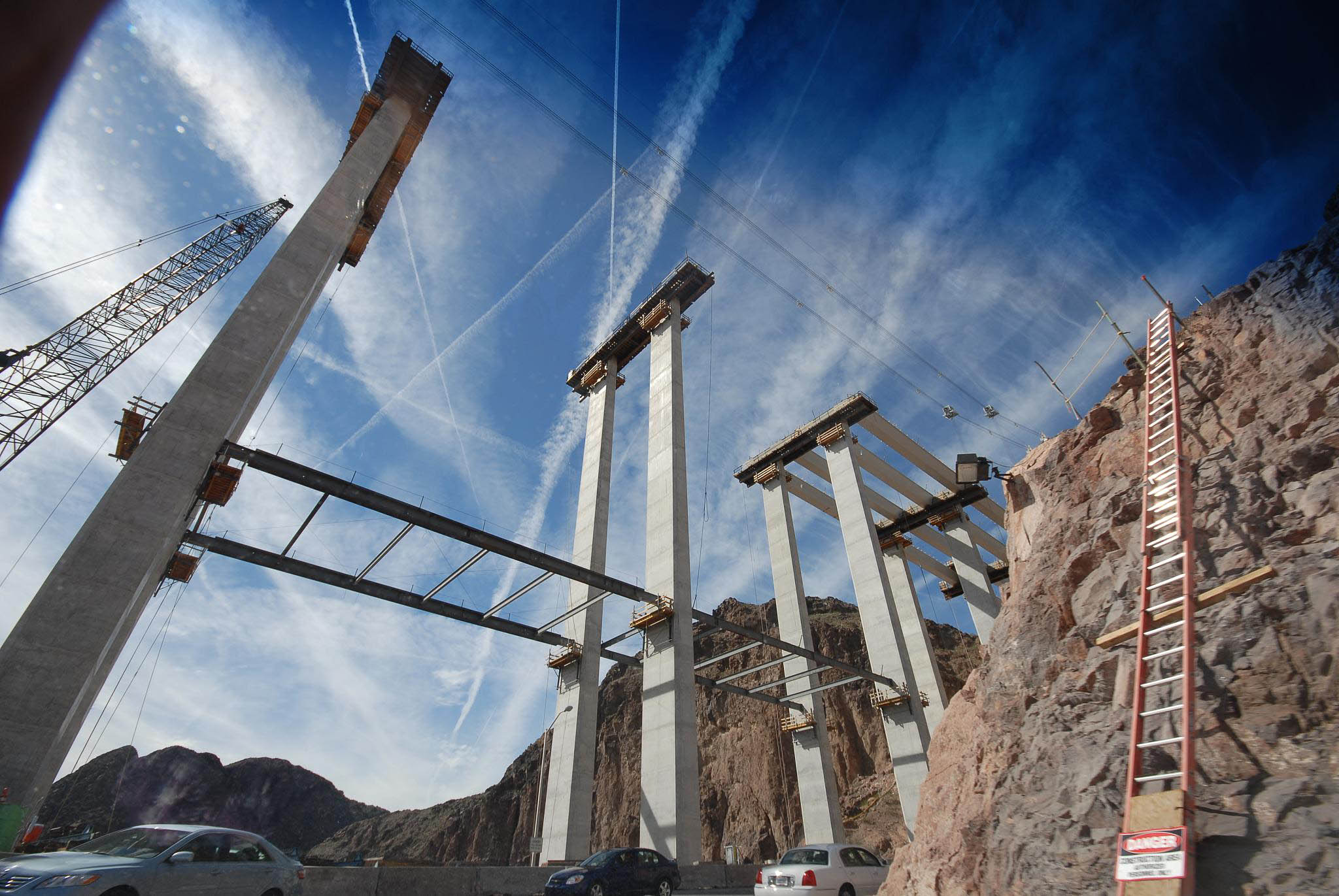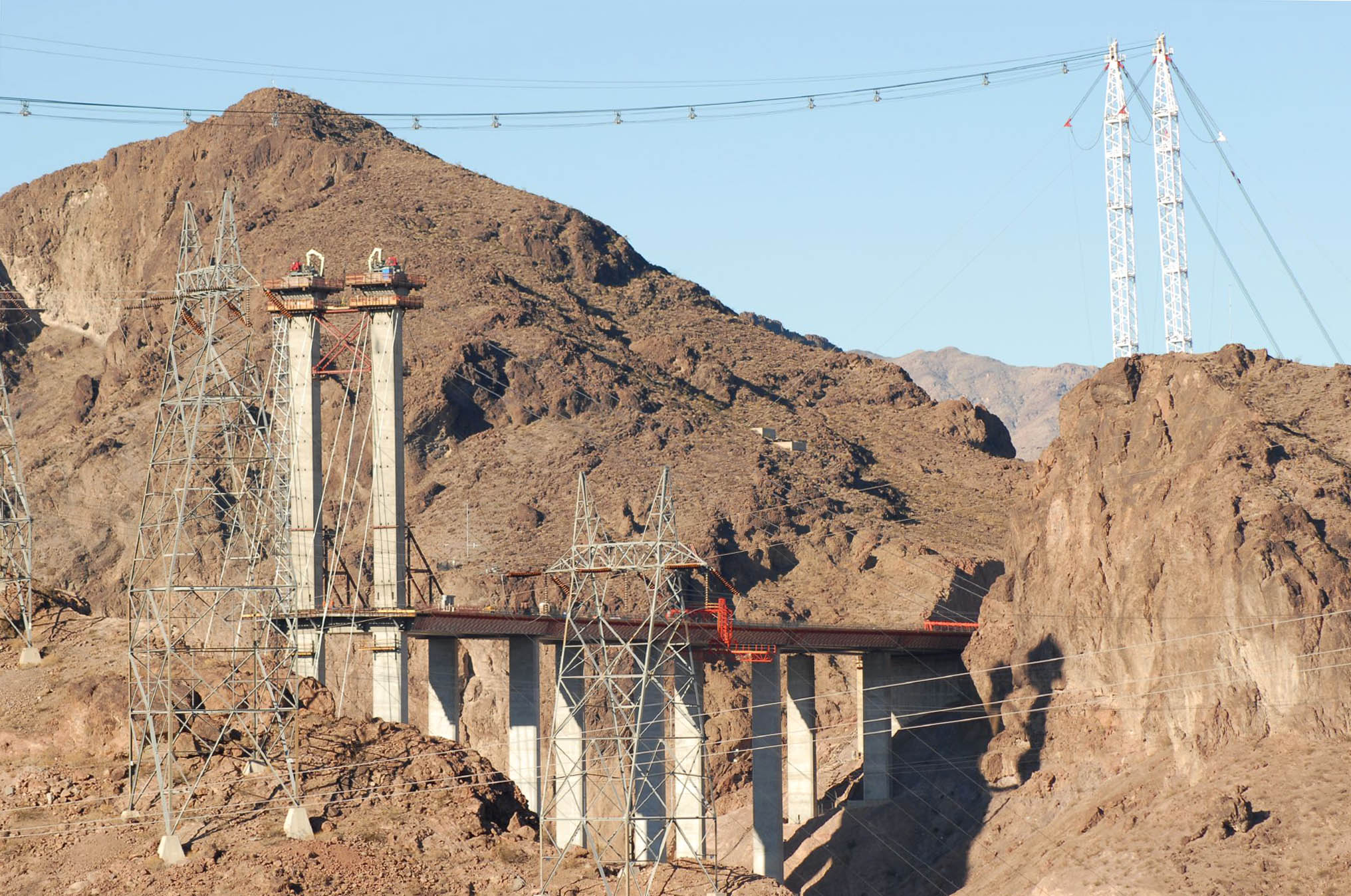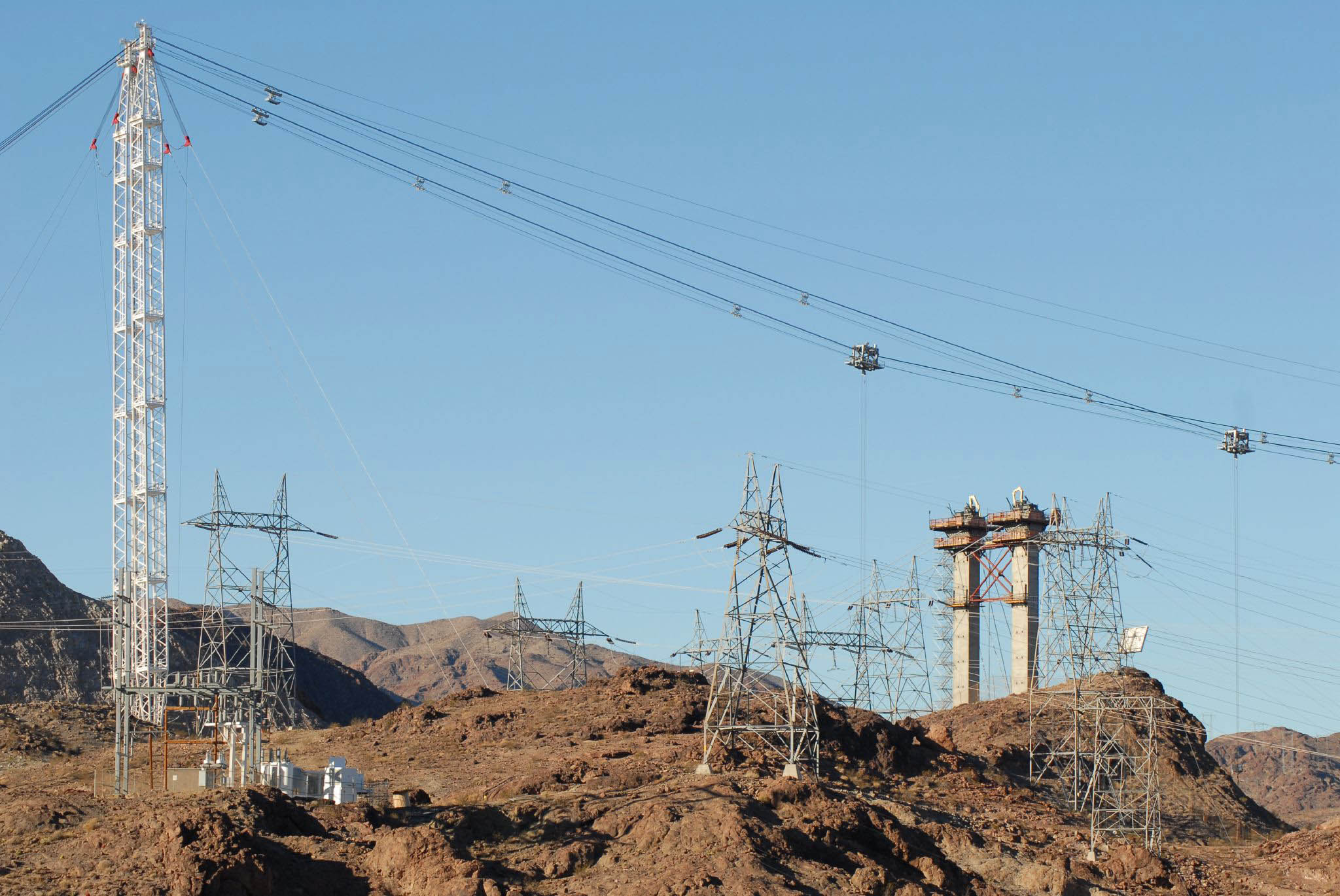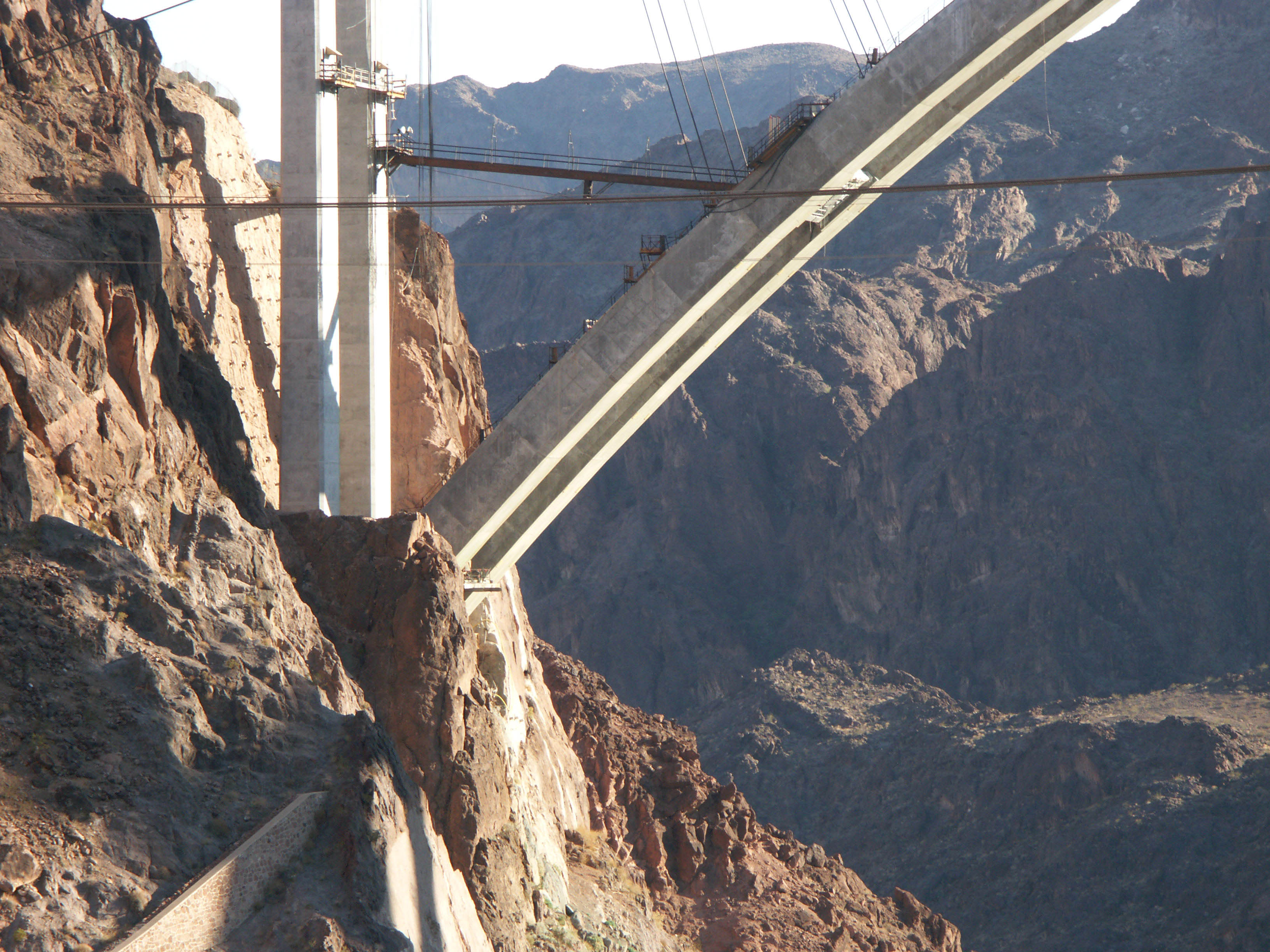Mike O'Callaghan-Pat Tilman Memorial Bridge
Mike O'Callaghan-Pat Tilman Memorial Bridge
Colorado River Bridge
Hoover Dam Bypass Bridge
Boulder City, Nevada, United States
890 feet high / 271 meters high
1,060 foot span / 323 meter span
2010
The tight switchbacks that descend into the the Colorado river canyon and across the Hoover Dam had long been a major bottleneck on busy route 93 which links Las Vegas, Nevada with Kingman, Arizona and Interstate 10. Since the dam’s completion in 1935, large trucks had to negotiate several tight switchbacks along the 2-lane road before dodging hordes of tourists visiting the Hoover Dam and visitor center. After 2001, trucks were diverted south to Laughlin on route 95 but the congestion had reached a point where it became obvious a high level bypass would be the only real solution. The resulting bridge would become America’s second highest ever at 890 feet (271 mtrs). Officially named the Mike O’Callaghan-Pat Tillman Memorial bridge, it will become the world’s highest concrete arch bridge when it opens in 2010.
Several routes were studied before an alternative known as the Sugerloaf Mountain crossing was chosen. It won out over several proposals that would have crossed the Colorado river 2.5 miles (4 kms), 8 miles (13 kms) and 14 miles (23 kms) south of the dam. Other less likely options included a crossing even further south near Laughlin and two Lake Mead proposals including one just north of the dam. Several steel and concrete arch designs were considered before it was decided to go with a composite concrete deck arch. Of all six proposals, the most dynamic was for a steel Vierendeel arch where the spandrels are arranged in a radial sunburst pattern. This design has never been used on an arch bridge in the U.S. and would have given the structure a signature look - something that should have been given more consideration given the millions of people who will be photographing the bridge from the top of the dam. It also would have been an opportunity to make a more dynamic logo for the bridge and dam. Increases in engineering calculations were the reasons given for its exclusion. The concrete and steel composite arch that was finally chosen is composed of two massive ribs that form a breathtaking span of 1,060 feet (323 mtrs), the longest of any North American concrete arch and nearly double the length of the 550 foot (168 mtr) span of the Fred G. Redmon bridge over Selah Creek in Washington State and the 582 foot (177 meter) Natchez Trace Parkway bridge near Franklin, Tennessee, U.S.A.
During construction, the proximity of the foundation excavation blasting to the historical Hoover Dam buildings and the desire to preserve the natural state of the canyon walls led to the installation of nets to catch loosened rocks and boulders. The project had its biggest setback on September 15, 2006 when all four of the 50-ton high line cable towers collapsed from the wind. The mishap delayed erection of the arch by nearly two years before a newly designed highline was built. The pier sections and pylons for the bridge were all built off site and trucked in while the arch rib sections were cast in 24 foot (7 mtr) increments and were suspended over the canyon with cable stays until the two sides of the arch could be closed at the crown. The best design trait of all might well have been the simple decision to include a walkway on the north side of the bridge. From here the majesty of the Hoover Dam can finally be seen straight on from a vantage point normally reserved for planes or helicopters.
Since the bridge crosses a state line, the construction was undertaken by the Arizona and Nevada Department of transportations along with several private contractors including T.Y. Lin International, Sverdrup Civil, Edward Kraemer & Sons, R.E. Monks Construction, Vastco, Obayashi Corp and PSM Construction USA.
The bridge was officially named the Mike O’Callaghan-Pat Tilman Memorial bridge in 2004. Mike O’Callaghan was a former Nevada Governor from 1971 to 1979 and later became an editor of the Las Vegas Sun newspaper. Pat Tillman was an Arizona State University graduate who left a lucrative NFL football career to join the Army in 2002. He was killed in Afghanistan from a friendly fire incident in April of 2004 at the age of 27.
You can follow the entire history of the bridge from design to completion at the official website: http://www.hooverdambypass.org/default.htm
Image by HooverDamBypass.org
Image by Brian Sisk
Image by Monkeys Mumsie
Image by Eric Sakowski / HighestBridges.com
Image by Steven Miller
Image by Steven Miller
Image by Steven Miller
Image by Eric Sakowski / HighestBridges.com
Continued on Page 2
